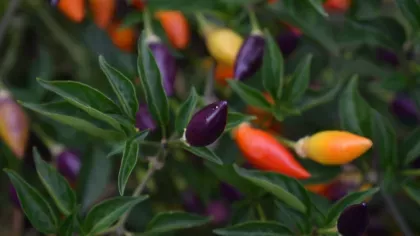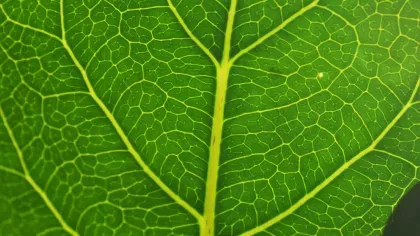Durian. The king of fruit.
The southeast Asian plant Durian has been called the King of Fruits but, like Marmite, it sharply divides opinion between those who love the taste of its custard-like pulp and those revolted by its putrid smell.

It would not, perhaps, be correct to say that the Durian is the best of all fruits, because it cannot supply the place of the subacid juicy kinds, such as the orange, grape, mango, and mangosteen, whose refreshing and cooling qualities are so wholesome and grateful; but as producing a food of the most exquisite flavour, it is unsurpassed."
[Alfred Russell Wallace, 'The Malay Archipelago', 1869]
The King of Fruits
If there are "100 things you should taste before you die", then the durian fruit is certainly in the top ten. Hailed as the undisputed ‘King of Fruits’ in southeast Asia, to westerners this exotic delicacy can be a real ‘Marmite test’: you either love it or you hate it! However, unlike Marmite, the durian’s contentious ambiguity does not lie in its taste, which is delicious, but rather in its disagreeable smell. To give you an idea, the experience of tasting your first durian can be compared to eating custard cream with a dash of Baileys in a men’s changing room crowded with steaming athletes returning from a heavy workout and a sumptuous dinner of raw onions and garlic. Hmm...
Understandably, this may have dampened your appetite for durian. So here’s some botany first, before we delve deeper into the culinary qualities of this most infamous of fruits and discover the true significance of its outrageous smell.
Durio zibethinus
The southeast Asian genus Durio belongs to the Mallow family (Malvaceae) and comprises 20-30 species, at least eight of which are edible. The economically most important species of durian (Malay for “thorny fruit”), Durio zibethinus, has been cultivated in south-east Asia for centuries. Its large white nocturnal flowers are borne directly on the major branches (a phenomenon called ‘cauliflory’) which later have to be strong enough to carry the heavy fruits. The flowers reportedly smell like sour milk and are pollinated by bats which drink the copious nectar offered.
Durians are so popular in southeast Asia that there are literally hundreds of different cultivars of Durio zibethinus. This is also the only species traded internationally. You can easily pick up a durian in London’s Chinatown if you are willing to pay around £20 for one. Alternatively, you can buy a few individual seeds on a Styrofoam tray covered with cling film. As for different flavours, I have only ever seen one single variety offered in Europe, which is usually imported from Thailand - the Mon Thong variety (Mon = pillow, Thong = gold).
Size and growth
The durian’s highly-prized fruits can be the size of a football and weigh up to four kilograms. On the outside they are covered by a ferociously spiny, dull green to yellowish-brown husk (duri = Malay for thorn). Inside, the fruit is divided into 5 compartments representing the five carpels from which the fruit develops. When ripe, the heavy fruits drop off the branches and split slightly from the top down along 5 distinct, preformed lines which correspond to the median lines of the carpels. At this stage the fruits begin to emit their infamous ‘body odour’ that has been variously described as resembling a blend of sweat, faeces, unwashed socks or a mix of rotten garlic and onions.
Durian products
Disliked by most Europeans and banned from the underground in Singapore, the durian is treasured by people all over Asia and revered as the veritable ‘King of Fruits’. What seems like a dubious admiration does not reflect a twisted olfactory preference, but a fondness for the extraordinarily delicious taste of what lies inside the malodorous pod. The people of southeast Asia don’t just enjoy the fresh fruits. Durians are used to make all kinds of mostly sweet treats like pastes, cakes, cookies, milk shakes, ice cream, chips, candies and lots more.
Wallace on durian
The edible part of the durian consists of the white or cream to golden-yellow arils (= seed appendages) covering several very large (c. 2 x 6 cm), chestnut-brown seeds. When the fruits are ripe, the hard tissue of the yellowish arils disintegrates into a custard-like cream whose consistency and flavour has been described as a tantalising mixture of nuts, spices, bananas, vanilla and onions. After his first visit to Borneo, the great 19th century naturalist Alfred Russell Wallace wrote:
The Durian grows on a large and lofty forest tree, somewhat resembling an elm in its general character, but with a more smooth and scaly bark. The fruit is round or slightly oval, about the size of a large cocoanut, of a green colour, and covered all over with short stout spines the bases of which touch each other, and are consequently somewhat hexagonal, while the points are very strong and sharp. It is so completely armed, that if the stalk is broken off it is a difficult matter to lift one from the ground. The outer rind is so thick and tough, that from whatever height it may fall it is never broken. From the base to the apex five very faint lines may be traced, over which the spines arch a little; these are the sutures of the carpels, and show where the fruit may be divided with a heavy knife and a strong hand. The five cells are satiny white within, and are each filled with an oval mass of cream-coloured pulp, imbedded in which are two or three seeds about the size of chestnuts. This pulp is the eatable part, and its consistency and flavour are indescribable. A rich butter-like custard highly flavoured with almonds gives the best general idea of it, but intermingled with it come wafts of flavour that call to mind cream-cheese, onion-sauce, brown sherry, and other incongruities. Then there is a rich glutinous smoothness in the pulp which nothing else possesses, but which adds to its delicacy. It is neither acid, nor sweet, nor juicy; yet one feels the want of none of these qualities, for it is perfect as it is. It produces no nausea or other bad effect, and the more you eat of it the less you feel inclined to stop. In fact to eat Durians is a new sensation, worth a voyage to the East to experience.." [Alfred Russell Wallace 1869: 'The Malay Archipelago']
Bad smell and seed dispersal
Believe you me, if you have never tried a durian before, you will never have tasted anything so amazingly rich and complex in your life. I absolutely love durian, but I have seen fellow Europeans unable to share my enthusiasm because they simply could not overcome the unsavoury associations conjured up by the durian’s bad smell. As a scientist, I am looking for a logical explanation which helps me to understand the durian’s offensive stench. It is pretty obvious that it all boils down to the durian’s strategy of getting its seeds dispersed.
The durian’s dull green to brownish colour and odour strongly suggest that the fruit is adapted to be dispersed by mammals. Most mammals are colour-blind or have just dichromatic vision but a very keen sense of smell. They rely much more on their noses than their eyes to find food or sense approaching predators.
Weirdly, heavy, sickly and sometimes yeasty scents with olfactory components of fermenting fruit and ‘mammalian body odour’, which we humans find repulsive, are very attractive to many (other) mammals. What’s more, the fact that the durian drops to the ground when ripe, combined with its large size, heavy weight and tough husk indicate that only large terrestrial animals with a mouth big enough to swallow the bulky seeds and sufficiently strong and dexterous to break open the spiky armour are invited to the meal.
Seed dispersers and pulp thieves
It is therefore not surprising that a durian that has landed on the ground and begun to emit its more than recognizable smell attracts a variety of big beasts including elephants, Asian rhinos, orangutans, gibbons, monkeys (e.g. long-tailed macaques), tapirs, wild boar, deer and even carnivores like tigers, leopards, civets and sun bears. Any remains of the durian left by these big animals are scoured by smaller durian-lovers ranging from squirrels to beetles and ants. Naturally, such a rich and delicious treat like the durian attracts a lot of attention, both from genuine bona fide seed dispersers, the durian’s actual ‘target customers’, as well as from pulp thieves. The latter indulge in the nutritious pulp but actually do not help to disperse the seeds and sometimes even destroy them in which case they become seed predators.
Ideal dispersers either carry the seeds over a significant distance (e.g. 20 m or so) and discard them undamaged after eating off the aril (e.g. long-tailed macaques) or they swallow the seeds whole and defecate them intact (e.g. elephants, rhinos). Pulp thieves, on the other hand, would eat the pulp but then fail to transport the seeds (e.g. sun bears). It is not easy to find reliable scientific information about the dispersal ecology of durian. However, during one very interesting field study carried out in Sabah, Malaysia long-tailed macaques turned out to be the most efficient bona fide disperser of the seeds of Durio zibethinus.
Pygmy elephants and orang utans
Although elephants are known to eat durians and pygmy elephants (Elephas maximus borneensis) were present in the study area, they were not observed to help with dispersal. Sumatran rhinos (Dicerorhinus sumatrensis), also very likely to be native bona fide dispersers in Sabah, were absent from the study area. Most surprisingly, orang utans, long known to be avid consumers of durians and generally deemed to be among its primary dispersers, turned out to be mere seed predators. The apes pluck immature durians and eat both aril and seeds, leaving only the seed coats which they spit out after their meal.
This is somewhat surprising because with their flimsy brown seed coats, durian seeds rely on chemical rather than physical protection in the form of toxic fatty acids (e.g. sterculic and malvalic acids) present in the tissue of the storage embryo. Perhaps orang utans have developed some kind of immunity or their bodies simply tolerate higher doses of these toxins than other animals. Toxins aside, durian seeds are highly nutritious, consisting of nearly 50% carbohydrates with little protein and fat. Boiling or roasting turns them into an edible starchy treat, a source of food long used by native peoples.
Another study showed that although tapirs eat durians and could therefore act as bona fide dispersers, the seeds fail to germinate after passing through the animal’s gut.
- Wolfgang Stuppy -
P.S.: I am not quite sure how but, allegedly, durian acts as an aphrodisiac. As a Malay saying goes: "When the durians fall down, the sarongs fly up!"


